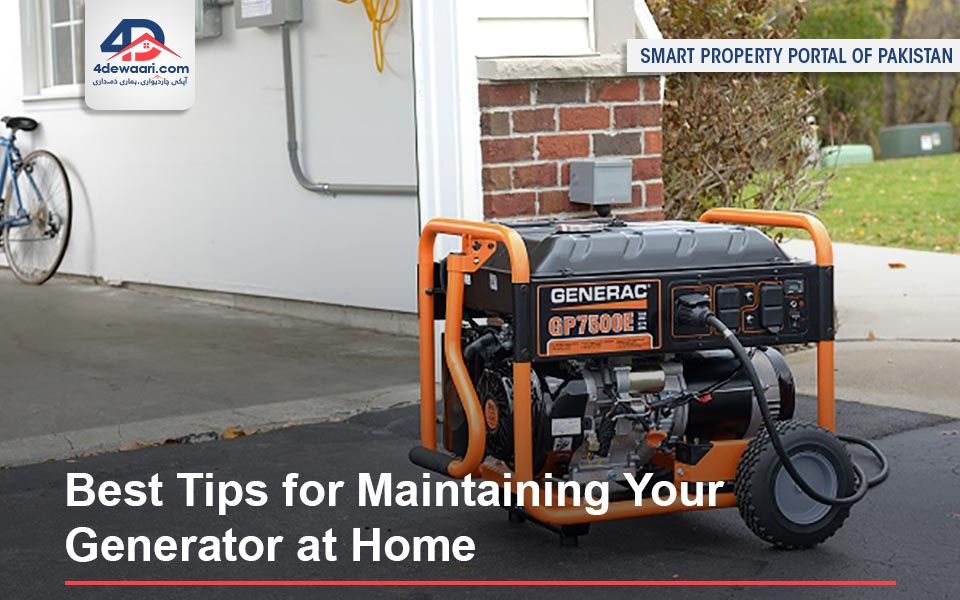Generators are something that should be maintained so that they keep working properly, especially if you use them regularly. You should always have it checked out by an expert at least once every year, or even more often if you find that it’s not working as well as it should be or that it’s not running as long as it used to run before you started using it. Here are some useful tips for maintaining generator at home and making sure it works right every time you need it to work right. You should have a few useful instruments on hand for generator maintenance and repair before beginning the checklist.
Essential Tools For Home Generator Maintenance
Keep in mind the following how to keep a generator running?:
• More spark plugs
• A toolbox containing screwdrivers, pliers, wrenches, and other tools
• Supply of fuel
• Oil and grease
• Anti-corrosives
• Generators' weatherproof covers
• Extending cables
• Manufacturer’s instruction manual
Checklist For Generator Maintenance
Repairing Loose Parts
The generator contains numerous moving parts, some of which could eventually come loose. Anything from gasoline pumps and injectors to wiring and electrical parts could be the cause. If you are unclear about how to fix any loose, jammed, or frayed parts, you should consult an expert. It is advisable to take no risks at all and play it safe.
Read Also
Best Tips For Saving Money While Building House
Changing Spark Plugs
Changing the spark plugs every 50 hours is one of the most important maintenance steps to take. This helps increase efficiency by getting rid of any dirt or corrosion that builds up during normal operation. You can purchase a kit with four replacement spark plugs, or you can buy them individually. Simply remove the old ones and snap the new parts in. With a torque wrench, screw them down firmly while making sure they don't cross threads.
Generator Servicing And Maintenance
Your generator needs to be frequently cleaned and serviced regardless you are using it or not. If your generator is not in use, you can schedule a day in your timesheet to repair it at least 2 times a year. In the meantime, if you use your home generator every day, you should perform more frequent maintenance and cleaning tasks. If you prefer to keep your generator in working order, don't keep putting off the cleaning and upkeep tasks.
Check And Change The Oil
Periodically check the oil level in your generator and change it as needed. It is also advisable to only use the type of gasoline specified for your generator because improper fuel may cause irreparable damage. All generators need to have the oil changed every 100 hours of operation or less, depending on use. The easiest way to figure out how much your generator has been running is to take a look at the maintenance log. Every time you turn the generator on, you should record the date and how long it ran. Add this up in hours and divide by 100 to find out how many hours you need to change your oil.
Read Also
How To Make Your Home Eco-Friendly
Moreover, if you are wondering how to change the oil in the generator follow these steps:
• Unscrew the drain plug from the bottom of your engine
• Then replace it with a new one from an automotive store that will fit securely but not too tight.
• After adding fresh oil back into the engine, run it for 10-15 minutes without turning it off. It let the fresh oil flow through all areas of the motor.
Take General Analysis Of The Generator Frequently
Examine the working parts of your home generator carefully as you clean them. Check for any cracked or rusty parts. Replace them right away because they can damage the equipment's ability to work. Don't forget to look for any wiring issues and jammed buttons as well, and solve them immediately. Every time you check and repair your home generator, keep a record of it.
Place Your Generator In A Safe Area
Lastly, place your home generator in a secure, shaded location, particularly if it is sizable and stationery. Avoid exposing your generator to dirt and dampness. Additionally, outdoor-installed generators have a weatherproof casing that shields the internal parts from potential environmental risks. However, if you have a backup generator, you may move it around your house with ease while considering the climate in mind.
Safety Advice For Using And Maintaining A Generator
Because a power generator has several mechanical elements and generates alternating current (AC), extra caution must be used when using and maintaining it. Look at these safety measures!
• Always keep your generator in an adequately ventilated place when using or maintaining it. The exhaust gases it produces contain carbon monoxide, a toxic chemical that has no color or smell.
• Avoid contacting a generator when it is wet. Wear rubber gloves and wipe down the generator's surface with a cloth before touching it unless it is required.
• Choose an appropriate cover or shady area for the installation of your home generator system if it will be permanently fixed. It would be significantly safer to operate a big backup generator in that kind of setting.
Final Thoughts
Here comes an end to our checklist for repairing and maintenance process of maintaining a diesel generator. You can take excellent care of your generator by following these guidelines. A well-maintained generator will also last for a long time. So get your toolkit out and be ready to have your hands grubby. Keep checking our blog to get more valuable information like this!















